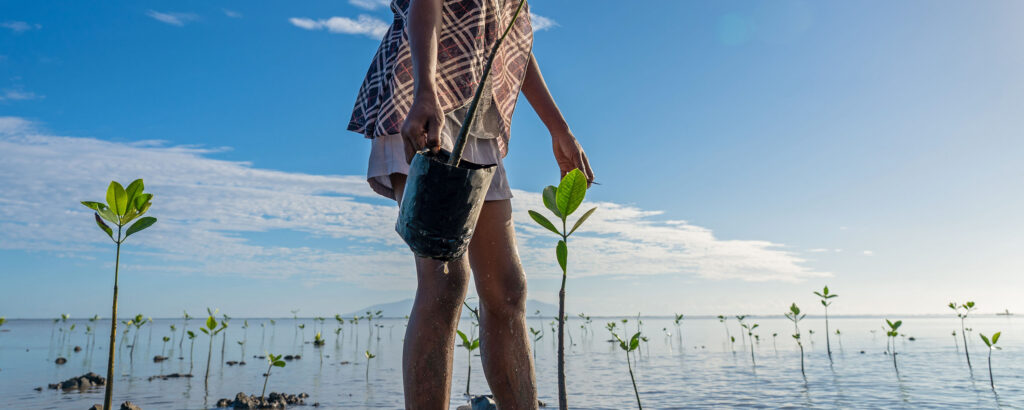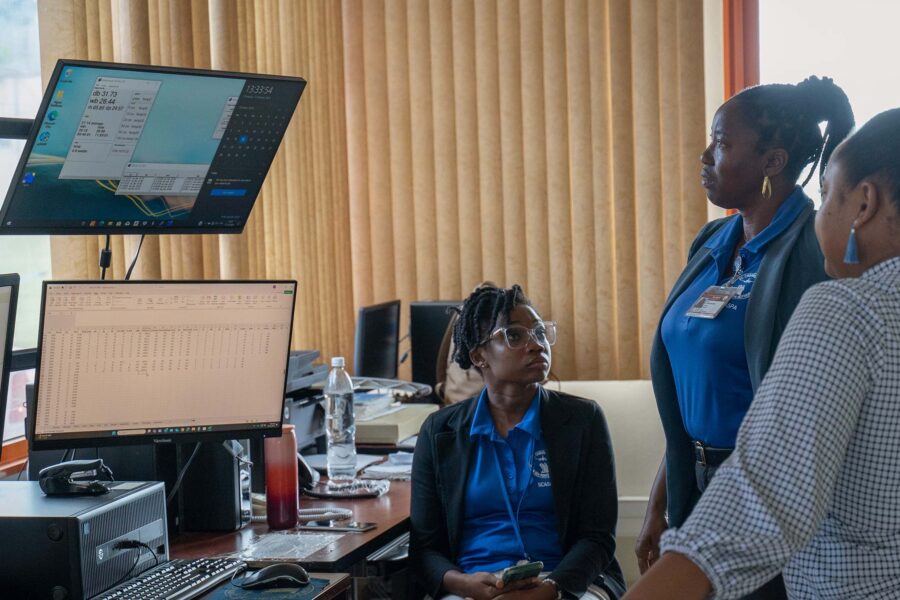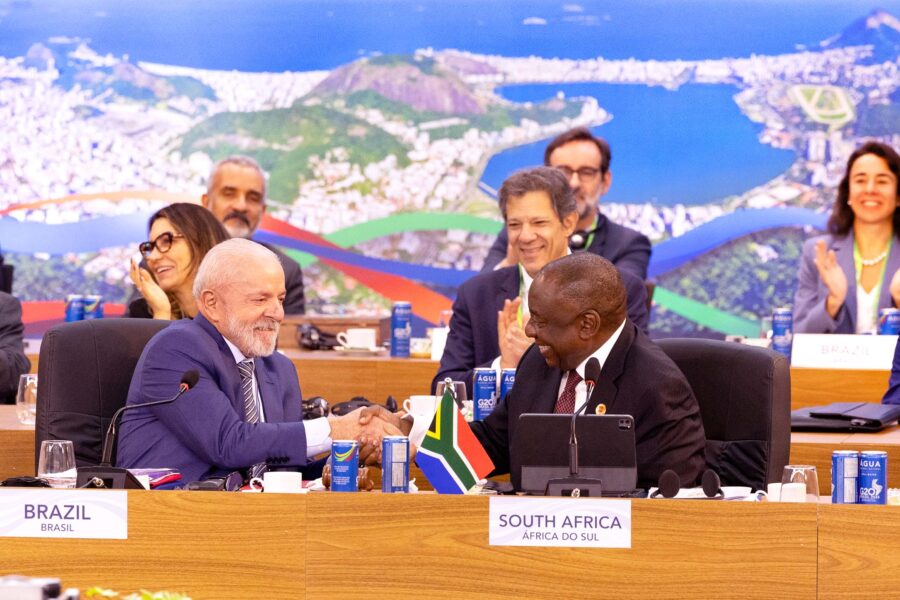A warmer world: are we ready?
Even the most optimistic predictions show a significantly warmer planet by 2100. Rather than focusing on quick adaptive fixes, as many current plans do, countries must pursue climate-resilient development strategies that address the systemic nature of the climate crisis
Climate — Global

Like clockwork, global headlines in 2022 have reported extreme weather events one after the other: searing heatwaves in Europe and South Asia, devastating floods in Pakistan and China, and crushing droughts in Africa, the US, and parts of Europe. The world is experiencing close to 1.5 shocks each day – extreme events that are increasingly par for the course in the Anthropocene era that we now live in.
Climate science is unambiguous on this front. At a current global average temperature increase of 1.1°C, what we are witnessing is a preview of impacts that lay ahead of us. The intensity and frequency of extreme weather is tied to global warming and will increase with higher temperatures. This is likely to cause widespread destruction and irreversible changes to our economy, human life, and ecosystems. In practice, in the high latitudes, mountains, and many cities around the world, local and regional warming has already breached 3°C.
We need to halve global emissions in the next eight years. Otherwise, by the 2040s, we are likely to breach the 1.5°C climate guardrail. This could leave a world of 10 to 12 billion people grappling with global warming of 3°C or more by 2100.
As things stand, key goals of the Paris Climate Agreement seem to be spiralling out of our grasp. A 2022 Climate Action Tracker analysis of country climate pledges shows that meeting current 2030 targets can limit warming to 2.4°C, while business-as-usual will increase warming to 2.7°C by 2100. The most optimistic scenario in this analysis will still leave the world warmer by 1.8°C.
What lies ahead
What does higher temperature mean for our world? At 1.5°C, we are looking at climate impacts that will exacerbate food and water scarcity, and poverty, and lead to economic damages worth trillions of dollars by 2100. The Intergovernmental Panel on Climate Change (IPCC) Special Report on Global Warming of 1.5°C tells us that every tenth of a degree increase above 1.5°C multiplies climate risks non-linearly, and every half degree difference brings us to an altered world. For instance, at 1.5°C an additional 350 million people living in cities will face water scarcity due to droughts. At 2°C this number increases to 410 million. Under 1.5°C warming, 14% of the world’s population would be exposed to extreme heat waves once every five years. This proportion more than doubles to 37% under 2°C warming. Beyond 2°C global warming, we are likely to hit adaptation limits that bring in their wake existential challenges to an already troubled world. How do we avert a global food crisis and grow adequate crops at a global warming of 2°C for a potential planetary population of 10 billion? How do we rebuild or adapt our infrastructure to withstand floods beyond 2°C?
Yet the primary challenges going ahead are not only environmental. They are political, economic, socio-cultural, and systemic.
We need to mitigate dramatically to stay below 1.5°C warming in the near term, because deep emission reduction is the best form of adaption. And, given what the science is telling us, we also have to prepare to adapt to the risks of a 2.7°C world. This is easier said than done. We have no precedence of such rapid economic, social, and institutional change in the 10,000 years of the Holocene era, which ended in the late 20th century.
Political consensus on climate inequality
To move ahead on this path, political commitment and consensus on climate action between the developed and the developing world, and the privileged and vulnerable in all countries, is essential. This consensus hinges on nations and people accepting and acting on climate change inequality, both in their contributions to climate change, and in adapting to the impacts of climate change. Both of these historical asymmetries demand that climate change action be framed within principles of inclusion, equity, and justice.
The first requires ambitious goals, targets, technological sharing, and financial pledges by developed economies. Developed nations are more carbon-invested, have historically contributed more emissions, and have higher emissions per capita than most developing economies. Emission-reduction targets for developing countries will have to be balanced with their imperative to implement the Sustainable Development Goals (SDGs) by 2030. For instance, nearly 567 million people in sub-Saharan Africa still have no access to energy and nearly 0.9 billion do not have access to clean cooking fuel. Recognizing this disparity and acting on it has proven to be a deep sticking point in international climate negotiations. This includes a promise by rich countries in 2009 of USD 100 billion to help developing countries, which has still not arrived.
Current geopolitics with an ongoing US–China–Russia rupture makes climate consensus even more problematic. The trickle of climate finance, especially for adaptation, continues to be the proverbial elephant in the room in international negotiations and a major barrier in global transition to net zero. A symbolic fresh start on climate finance can be made at COP27 if developed countries agree to create a loss and damages fund to assist climate-vulnerable countries and communities. There is momentum for this with over 400 organisations demanding that loss and damage finance be on the COP27 agenda.
Addressing the second climate inequality implies that nations and governments recognize that low and middle-income countries (and poor and marginalized communities within them) are most at risk from climate change. Climate change deepens existing social, regional, and economic inequality, disproportionately affecting the most vulnerable and poor. To reduce climate vulnerabilities, we need to consider climate “in the context of sustainable development” as stated in the Paris Agreement.
Effective climate action requires collective action and alignment to meet the UN SDGs, including:
- ending poverty (SDG 1)
- decent work (SDG 8)
- ensuring universal good health (SDG 3)
- access to clean water and sanitation (SDG 6)
- affordable and clean energy (SDG 7)
- reduced inequality (SDG 10)
- gender equality (SDG 5)
Despite progress made since 2015, we are not on track to meet these Global Goals by 2030. Indeed, we have suffered reversals in many parts of the world during the pandemic.
Adaptation, mitigation, and climate-resilient development
Climate change awareness and exposure to extreme events have spurred 170 countries to develop adaptation plans to minimize climate risks. However, there is a gap between these plans and actual implementation. Most of these plans are also focused on a near-term risk and are insufficient to address the systemic nature of the impending crisis.
For instance, several countries have opted to build sea walls to act as a hard defence against sea level rise and floods. This is likely to be a short-term and costly solution. It can also lead to unintended consequences like destroying natural ecosystems or flooding other unprotected areas. A more feasible adaptation strategy would be hybrid one. This would use a mix of ecosystem-based adaptation via the conservation of mangroves, wetlands, and living shorelines and only use hard defences in a very few places. Instead of short-term action, governments must look at coordinated adaptation and mitigation plans that are aligned with sustainable development interventions.
Climate-resilient development (CRD), endorsed by the IPCC in 2022, is such a framework that integrates adaptation, mitigation, and sustainable development. It seeks local solutions to global problems and brings together an array of stakeholders including the public, private sector, civil society, local communities, and the youth. Restoring mangroves as part of creating living shorelines, and creating urban forests and lakes are successful examples of ecological solutions that can help adapt as well as mitigate climate risks.
When we transform our cities with green and net-zero buildings, invest in climate-resilient infrastructure, plan for sustainable cities with compact urban form, and adopt policies to address social and economic inequality, we are practicing CRD. In coastal cities in the Global South, for instance, effective climate action plans to reduce flood vulnerability would include:
- upgrading informal settlements
- creating safe and affordable housing
- providing social safety nets for marginalized citizens
System transitions and enabling conditions
The effective operationalization of CRD requires simultaneous systems transition in five areas:
- energy
- industry
- land, water and ecological systems
- urban and infrastructure
- societal choices around consumption and behavior
The energy transition is starting to take off in some parts of the world, unlike the industrial transition which is lagging. The urban and infrastructure transition has potential to accelerate CRD, especially when coupled effectively with ecosystem-based adaptation and nature-based solutions. The societal transition is a big ask, but successful COVID-19 responses in some parts of the world have shown that rapid and systemic societal change is possible.
The enabling conditions to accelerate these transitions are known and proven in many regions:
- effective multi-level governance
- climate finance
- enabling policy
- institutional capacity
- technology and innovation
- international cooperation
There is no silver bullet solution to climate change. It needs a consistent and relentless focus on implementation. Having said this, the window for CRD is narrow and rapidly approaching. CRD becomes difficult to implement as the world approaches 2°C degrees of warming.
The time to act on climate was yesterday. To reach future zero, we need to build political consensus, deploy resources to achieve deep emission reduction, prepare for transformational adaptation, and collectively pursue CRD for the well-being of all people, the economy, and the planet.





